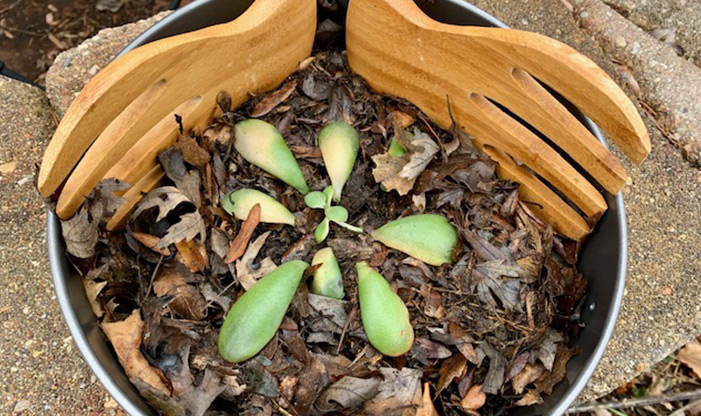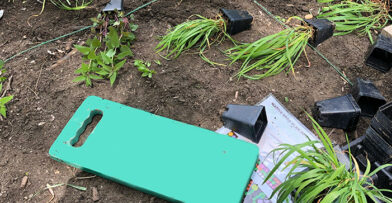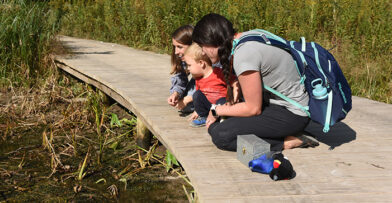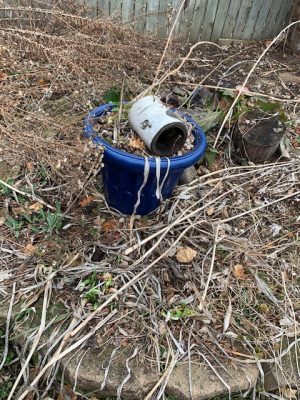 Our Nature Preschool staff have been sharing ideas for our families to stay engaged with nature. My daughter and I made a nature salad from our backyard garden. We thought others in the Schlitz Audubon community might enjoy this activity too.
Our Nature Preschool staff have been sharing ideas for our families to stay engaged with nature. My daughter and I made a nature salad from our backyard garden. We thought others in the Schlitz Audubon community might enjoy this activity too.
If your garden is anything like mine, it is still mostly brown, dried out, and dead-looking. There may be a few tiny green things trying to poke their heads out, but for the most part, it’s a soggy mess. But as depressing as my garden may look right now, it’s the perfect place for an outdoor kitchen! Just look at all those seeds, leaves and tangled stems waiting to be put to good use!
Now, I know mud kitchens are very popular. I’m a huge fan of mud kitchens myself, but I admit that I’m not anxious to have one in my own backyard. And so instead, I present to you, Nature Salads! Nature salads are a wonderful way for children to explore and play with all the dried up seed pods, dead fern leaves, and other plant materials we’ve got cluttering up our March yards.
Nature Salads – or whatever recipe your child invents – are fun, easy, creative, and really quite beautiful. Just don’t try to eat them! (Before I continue, I would like to acknowledge the wonderful educators at the Lynden Sculpture Garden who inspired this activity. When this is over, be sure to go visit them!)
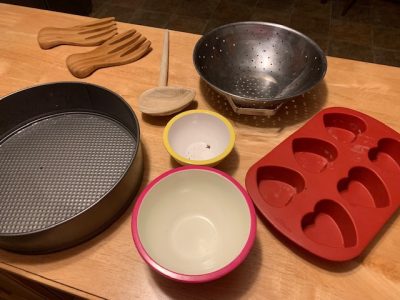 All you need to get started are various items from your kitchen, such as bowls, pie tins, cake pans, spoons, tongs, scoops. (Muffin cups are wonderful because you can decorate each “muffin” differently!) I recommend things that are not easily broken (i.e. metal and plastic) and that you aren’t overly fond of.
All you need to get started are various items from your kitchen, such as bowls, pie tins, cake pans, spoons, tongs, scoops. (Muffin cups are wonderful because you can decorate each “muffin” differently!) I recommend things that are not easily broken (i.e. metal and plastic) and that you aren’t overly fond of.
I also recommend child-friendly scissors. Since my daughter is a sophomore in high school, I no longer have child-friendly scissors in my house. Instead, I used these terrifying metal ones, inherited from my parents, which are probably older than I am.
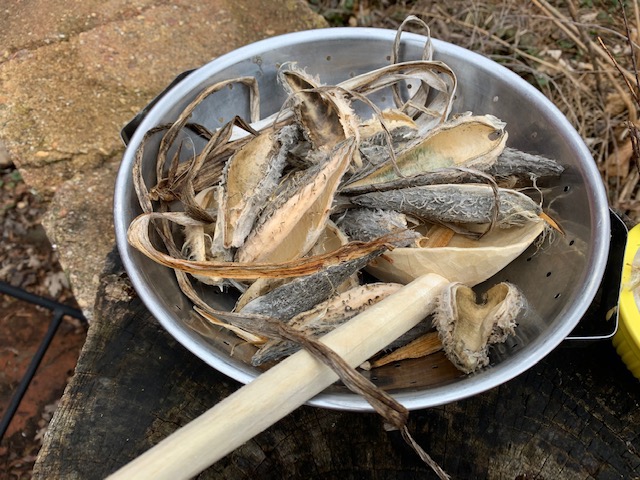 Next, head outside, and begin gathering! Plant materials that are fun to work with include: pine cones, acorn caps, sumac flowers, wood chips, dried bee balm, locust seeds, coneflower heads, maple seeds, and milkweed pods. Really, anything your yard/garden has to offer.
Next, head outside, and begin gathering! Plant materials that are fun to work with include: pine cones, acorn caps, sumac flowers, wood chips, dried bee balm, locust seeds, coneflower heads, maple seeds, and milkweed pods. Really, anything your yard/garden has to offer.
Arrange materials in different bowls, tins, muffin cups, or what have you. It’s really that simple.
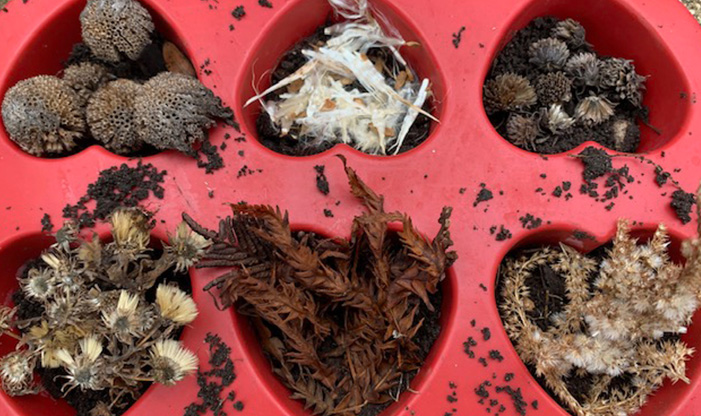
As far learning opportunities go, they are built right in: this experience is a wonderful way to turn your child into a story-teller. Allow your child to explain to you his or her creation, to describe the different ingredients and to talk about his or her favorite foods. Cutting tiny pieces of leaves and stems and arranging them in bowls is excellent for fine motor development. This is a joyful, engaging, sensory-based activity that encourages creativity while connecting to nature. And clean-up is pretty easy! We just tossed our salads into the compost bin when finished. If you don’t have a compost bin, toss them back on the ground.
